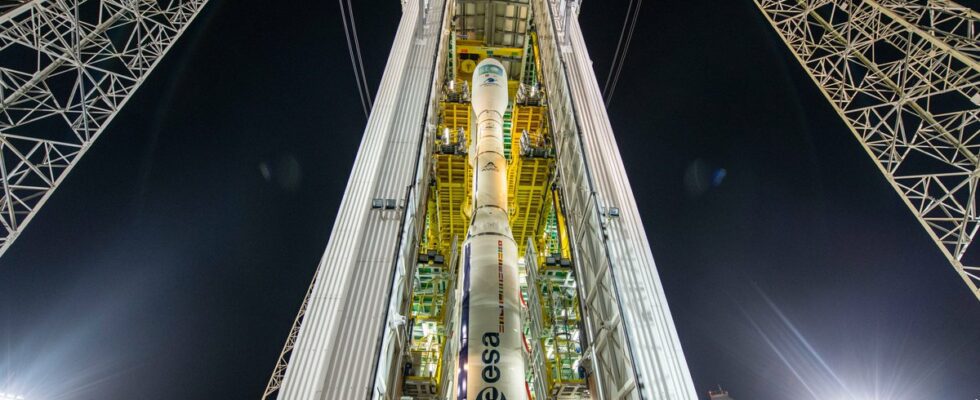The technical results leave no room for doubt, it is the nozzle neck of the second stage of Vega C who has condemned the theft last December. But the choices of the Italian industrial prime contractor Avio are debated, at the industrial level as well as at that of the agencies. Worrying, before considering the return to flight in 2023…
It will take time to rebuild trust.
The investigation is over
” We are in crisis “, admitted this Friday, March 3, the director of the ESA, Joseph Aschbacher, explaining that an in-depth reflection was needed on European access to space. The construction site is huge. A year after the political stoppage of Soyuz flights at the Guiana Space Center, the situation has continued to worsen. Ariane 6 is very late and Vega C, the new European flagship of small and medium capacity launchers (up to 2.3 tonnes in low polar orbit), grounded after the failure of its first commercial flight in December 2022 A crash which is very expensive for Airbus DS – which lost two very high resolution Pleiades NEO observation satellites – and which led to a joint investigation by ESA and Arianespace after this 3e Vega family crash in 22 flights. The conclusions were made public on Friday: as soon as the solid second stage of the rocket, the Zefiro-40 (or Z-40), was ignited, a drop in pressure was noted. The neck of the nozzle, an absolutely crucial element during combustion, deteriorated very quickly and did not resist.
A choice that is much talked about
The neck of the Z-40 nozzle is a carbon/carbon composite part resulting from a complex industrial process that is difficult to master. This is where the choice of Avio, prime contractor for the Vega and Vega C programs, raises questions: while Arianegroup supplied the nozzle necks for its launchers, for this stage the company chose a Ukrainian supplier (Ioujnoïe or Yuzhnoye). Was it with a view to lowering costs? Avio’s desired independence from Arianegroup? Or quite simply, as the Italians explain, linked to problems with lead times and the availability of parts?
It seems that Avio was also lax, either on the specifications or on the quality checks, the report indicating that the parts delivered from Ukraine were in accordance with the expected… And that the means of inspection implemented in Italy could not detect the problem of non-homogeneity of the material. The invasion of Ukraine is also not in question, the parts having been delivered earlier.
Preparing for the recovery… quickly?
But will it be enough to change supplier to solve all the problems? This is already the case, argues Avio, who took precautions from the start of the war provoked by Russia in February 2022, to return to the choice of Arianegroup, and will no longer use Ukrainian parts following the December problem. last. To answer questions of reliability and quality control defects, the investigation report calls for requalification of the Zefiro-40 stage and the implementation of actions to guarantee better reliability. Nevertheless, it will take time for the launcher to take off again, so Arianespace, which markets the launches, has managed with the available equipment: a first-generation Vega rocket (there are two left) will take off at the end of the summer with a set of satellites, before the return to flight of Vega C expected at best for the end of 2023.
Doubts will persist
Despite everything, this report did not reassure everyone. CNES in particular, according to The echoes, would have sent a letter to the ESA “considering that the investigation is not thorough enough”, and based on the defects of the previous years. In 2019 and 2020 already, two Vega failures cost Europe dearly with an observation satellite from the United Arab Emirates, and a set of two French and Italian scientific satellites. Insurance costs for take-offs with Vega and Vega C have skyrocketed…
France, it is said, would like to go back in detail to the entire Vega/Vega C file before authorizing flights again… What the Italian industrialist would like to avoid at all costs so as not to nail his rocket to the ground during a long and expensive study (potentially more than a year). A problem of trust that further weakens the sector! Private and public customers, fortunately still numerous, are for the moment forced to wait or send their satellites to take off from the United States. Some are waiting for the arrival of the small launchers from NewSpace. SpaceX has successfully completed its 15e 2023 flight at the start of the weekend…
Source : The echoes

0